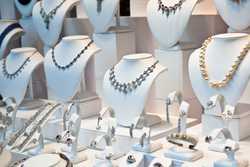- Support: Neutral
- Width: Medium
- Materials: Leather, polyester
- Weight: 16 ounces
- Cushioning type: Dual density EVA foam bed
- Closure: Slip on
- Price: $185
The Best Walking Shoes: 14 Pairs That Offer Comfortable Support

Our evaluations and opinions are not influenced by our advertising relationships, but we may earn a commission from our partners’ links. This content is created by TIME Stamped, under TIME’s direction and produced in accordance with TIME’s editorial guidelines and overseen by TIME’s editorial staff. Learn more about it.
Walking: Most of us do it without giving it much thought, whether we’re taking the dog out, running errands, or just meandering around the neighborhood. We don’t spend much time thinking about the shoes we wear, until, of course, we make the mistake of spending an entire day tooling around town and end up with unhappy feet. Walking shoes include boots and sandals, as well as athletic style shoes. There are dressier styles, so you don’t have to tie yourself to a pair of trainers or sneakers. Here are our top walking shoe picks that will keep your feet comfortable and supportive all day long, no matter the situation or environment.

These Dansko low boots may seem an odd choice for a “best walking shoes” accolade but, as a person with knee issues and high arches whose second career as a film and television pattern maker and costume designer involves a good deal of walking and standing, these are one my top footwear choices. I’m a longtime Dansko fan because of the dual density EVA foam bed and excellent support featured in all their shoe styles. These short boots are no exception. Plus, they go well with everything from jeans to flowy dresses to smart trousers. This means I can wear them while shopping, standing over my cutting table, running from fitting to fitting, and into meetings with producer types. If a pair of boots was ever made for walking, it’s these.
For more walking shoes for women check The Best Walking Shoes for Women: 10 Comfortable Options to Suit Your Style
Slip-on leather boots from Dansko with excellent arch support and style.

The plush cushioning of these shoes makes them exceptionally supportive and comfortable. You might even feel as if you’re floating through your day. They fit snugly around the ankle and heel while offering ample room in the toe area. They’re also impressively water-repellent with a grippy tread, so even getting caught out in the rain won’t cramp your style.
For more walking shoes for men check The Best Walking Shoes for Men: What’s Right for Your Feet?
Men’s running and walking show with soft cushioning and support, available in a range of colors.

With its dual foam midsole and contoured heel collar, the Lululemon Chargefeel 2 wraps around your feet like a second skin. You put them on and almost forget you’re wearing anything at all on your feet. It’s one of my favorite pairs of shoes for running errands in my neighborhood or spending hours on a layover.
Neutral fit running and trainer shoe with springy dual-density midsole, second-skin fit, and great sole traction.

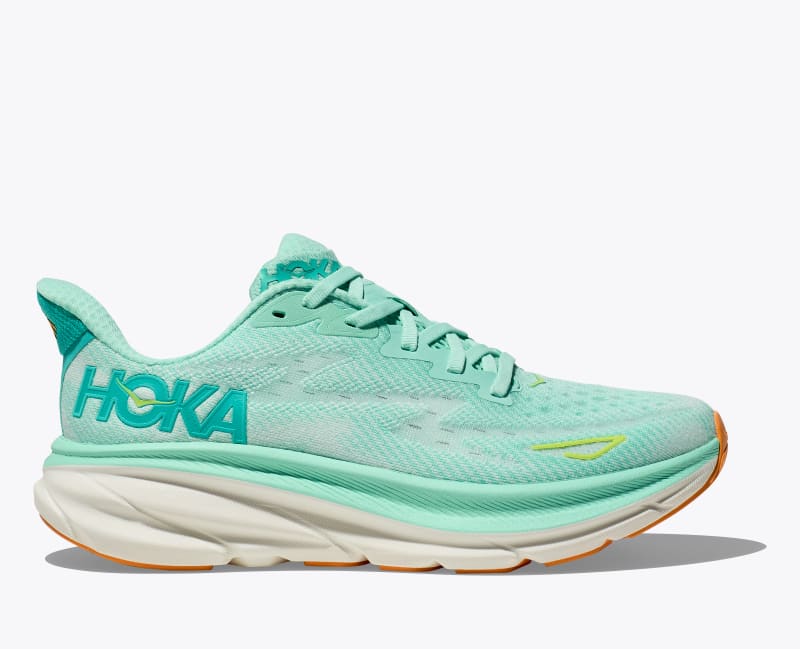
Hoka is a brand that comes up over and over when talking about comfortable walking shoes. The Clifton 9 features a compression-molded EVA midsole that absorbs shock while also providing enough cushion to give your step a little bounce. It earned two spots on our list because of its comfort, cushioning, lightness, and versatility—making it the shoe of choice for everything from treadmill walking and jogging to wandering around a new-to-you cobblestoned city.
Iconic shoe from Hoka (the brand known for creating highly cushioned shoes) featuring a balanced symmetrical shoe bed and available in a wide range of colors.

The Fuelcell midsole cushioning of New Balance’s 990 V6 provides a propulsive feel that gives each step a little more oomph which, let’s face it, many of us could use. The good thing is, these shoes are classically stylish enough to wear everyday. The iconic New Balance logo overlays “flow from heel to toe across the mesh underlay,” which is designer lingo for “these shoes look as good as they feel.”
MADE in USA New Balance 990v6 shoe with FuelCell midsole available in multiple widths.


I’ve been wearing Nike shoes since the 1980s, back when I used to run 25-35 miles a week—and it was always in a pair of Nikes. These days, my knees have more of a say in how long and often I’m able to run, but they’re still partial to Nikes when it comes to walking (or even hiking). The Pegasus model has been around for years and this latest version is just as cushiony and bouncy as its predecessors. They deliver a wonderful “off the ground” feel as you move through your day whether or not that involves running.
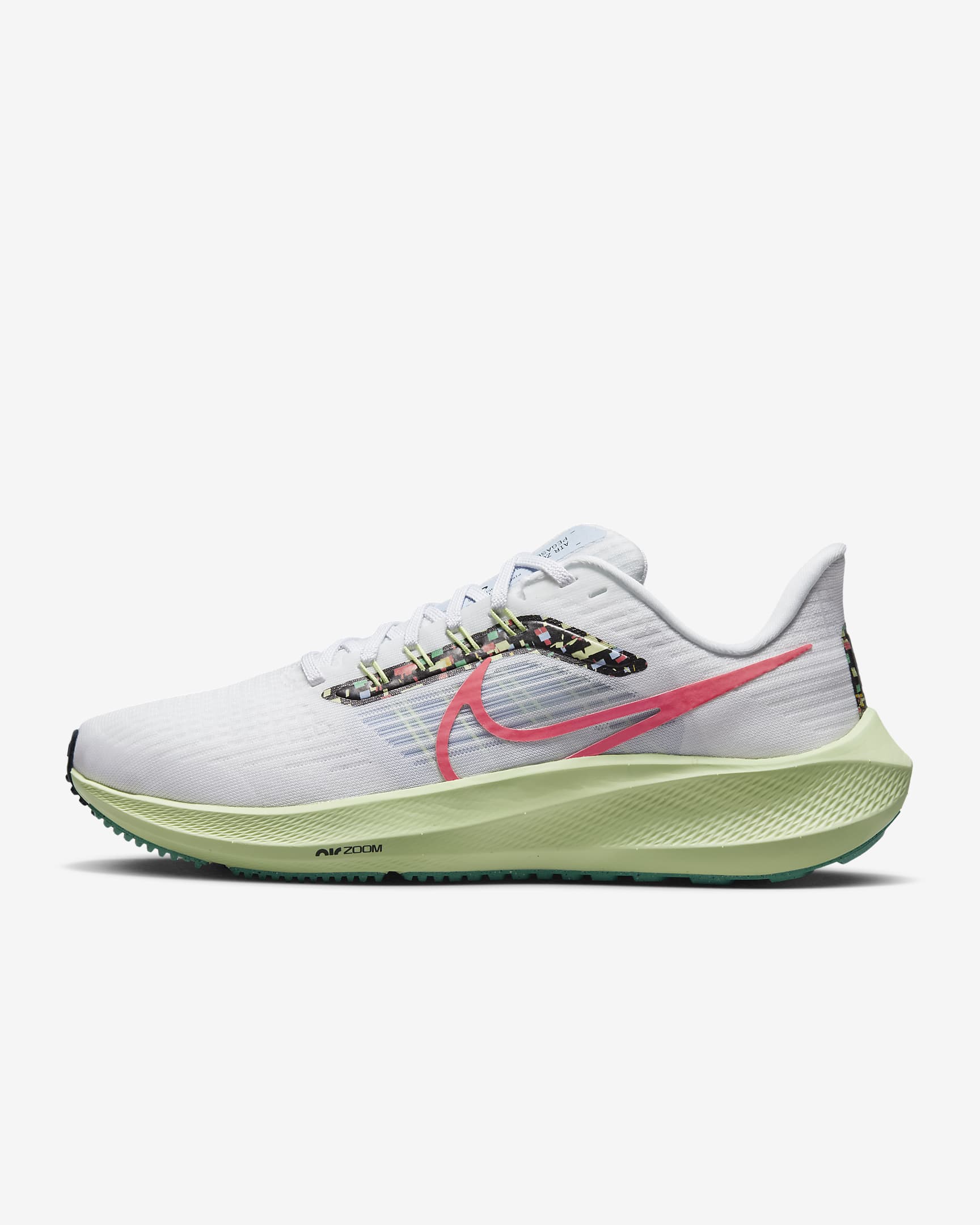

With excellent cushioning and shock absorption, the Asics Gel Venture is a great choice for walking on pavement as well as gravel and woody trails (as long as they’re not too rocky) at a very reasonable price point. The gel cushioning throughout the midsole provides support and easily absorbs bumps from uneven terrain, especially in the heel area. They also feature a breathable mesh upper, adequate wiggle room in the toe box, and an outsole with notable traction, even when the ground is wet.
Asics shoe with gel technology in the heel and foam midsole cushioning for comfortable transition from city sidewalks to trails.


The Bondi SR is the most cushioned shoe Hoka offers. Made from water-resistant leather with an EVA midsole and grippy rubber on the bottom, they’re an ideal workplace and all-day shoe for everyone, especially those that suffer from plantar fasciitis—one of the reasons they have an American Podiatric Medical Association (APMA) Seal of Acceptance.
All-day shoe from Hoka that offers plush cushioning and support for sufferers of plantar fasciitis with an APMA Seal of Acceptance.


While it may be a bit surprising to see a pair of clogs (as opposed to sneakers) earn our “best walking and standing all day” label, the Dansko Professional clog is no ordinary pair. They’re a popular shoe among medical professionals who spend hours a day on their feet, and you’ll see why when you slip them on. They feature a protective heel counter that provides the lateral support you need while also allowing your heel to move freely vertically. Plus, they have a supportive, contoured footbed with a sturdy sole that supports your feet through days that require long periods of standing.
Worn by medical professionals and others who spend hours on their feet a day, Dansko Professional Clogs provide support, comfort, and style no matter what you do for a living.


I’ve always been more of a boot person than a sneaker person when it comes to everyday footwear and exploring new places. With shock absorption soles, Blundstone boots are a perfect alternative to the sneaker scene. There’s virtually no break-in period and, while they’re obviously not as light as many of the sneaker options, they’re not clunky or heavy either. I’ve worn mine during long days of museum hopping and neighborhood exploring all over Europe and my feet were always comfortable. And I looked rather stylish.
Women’s pull-on weather resistant boots from Blundstone offer comfort, shock absorption, and legendary durability.
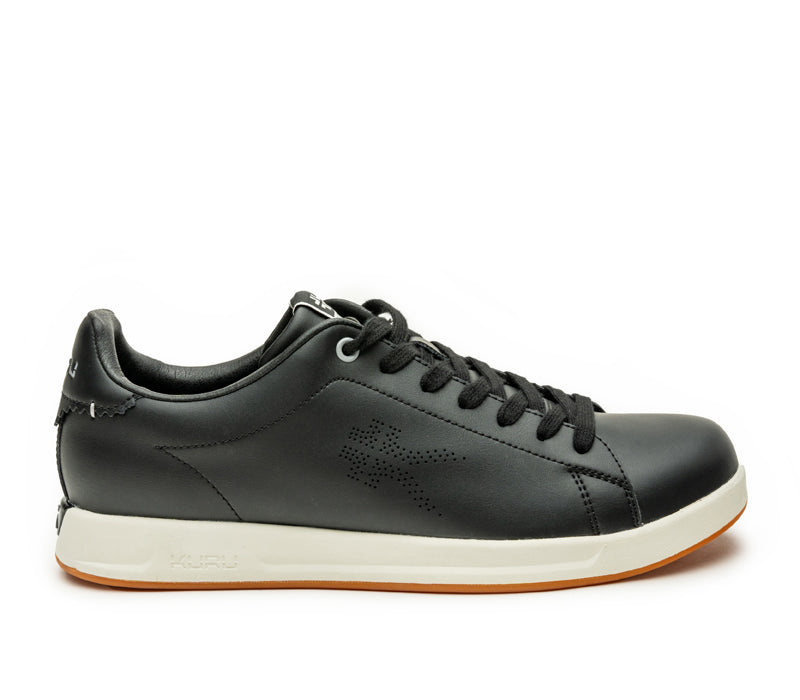
Made from eco-friendly leather, the Kuru Roam offers a classic, understated shoe style with excellent cushioning, a dynamic flexing sole, and support to protect your joints. The Kurusole features a design with a cushy heel pad that hugs your heels and a built-in insole that delivers arch support. We like that they don’t look like your typical athletic shoe. In fact, you’ll likely get lots of compliments on your stylish and cute shoes when wearing them.
Classic court shoe from KURU with insoles that mold to the shape of your feet and a style that doesn’t look like your typical athletic shoe.
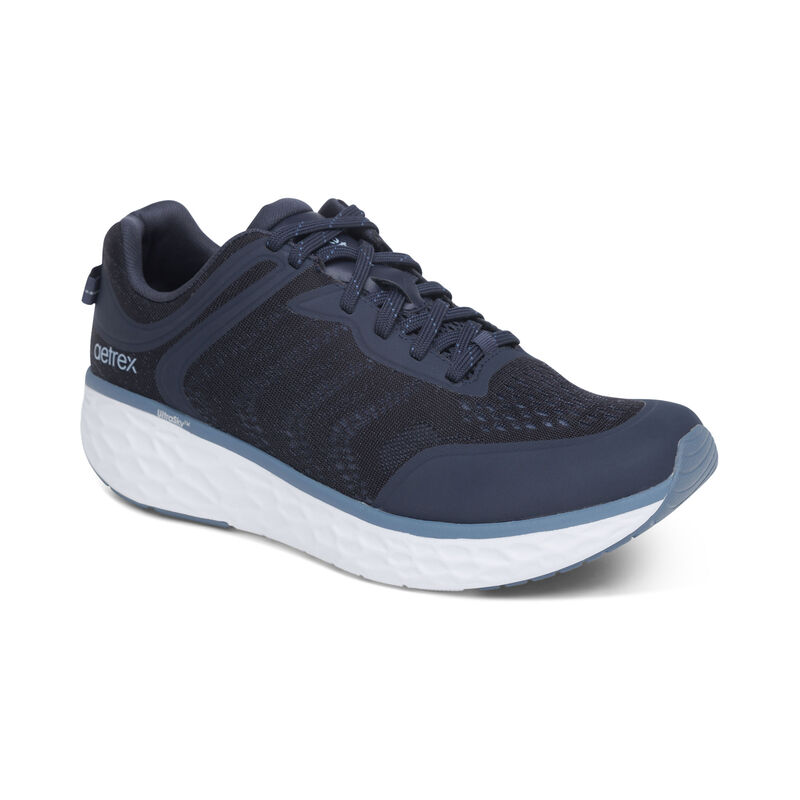
Designed for maximum arch support, these shoes from Aetrex help to keep your joints properly aligned (something my chronic runner’s knee appreciates). Aetrex shoes differ from other brands with their removable insole that positions the high point of its arch support farther back on the footbed nearer your ankle, which is more in line with how the bones of your foot are shaped.
Aetrex shoe featuring an insole with the high point of the arch support farther back on the footbed than most others—a position the brand says mimics how the bones of your foot are shaped.

The Fresh Foam X 1080s offer a nice, wide fit that allows your toes some wiggle room while helping prevent the formation of blisters and bunions with a snug fit around the ankle area. The upper is made from a breathable fabric that reduces moisture accumulation (which is also a plus when preventing blisters). There’s also a plush foam midsole that provides excellent cushioning. Shopping tip: New Balance made our list of the best running shoe brands—and their Fresh Foam X 1080 model is one of their most popular shoes.
According to New Balance, if they only made one running shoe, this would be it; features include plush midsole cushioning and second-skin style mesh upper.

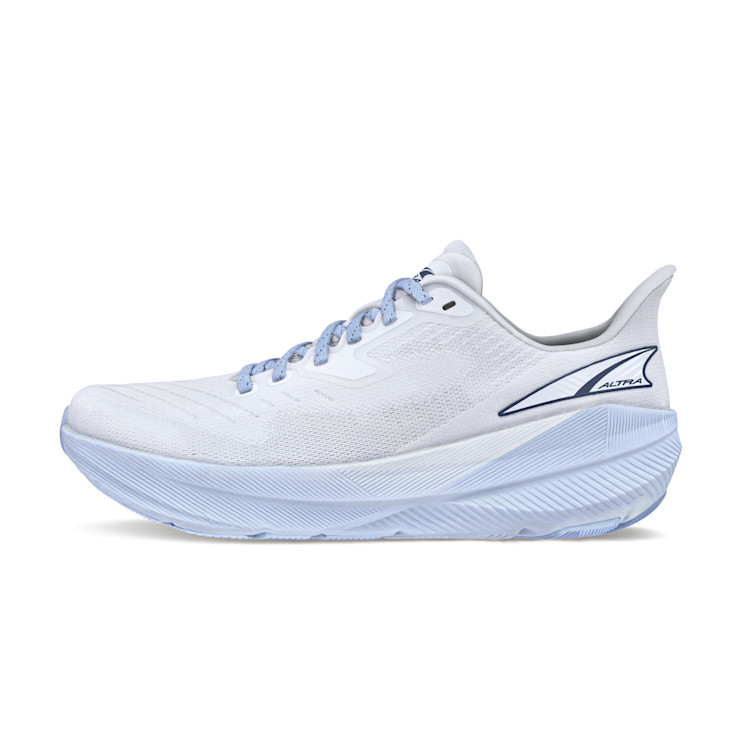
With Altra’s signature FootShape fit, the Experience Flow line features a wide toe box and a snug midsole fit that promotes natural movement in your feet. The wide toe box allows your foot and toe muscles to work, explains Milica McDowell, DPT and vice president of operations at Gait Happens. She also likes the mild cushion which is not “too aggressive like other brands that can even throw off your balance if they are too cushioned.” Plus, it has a flexible sole. “These features are a win, win.” Dr. McDowell says, “The Altra Experience line is amazing for walking.”
Lightweight shoe with a wide toe box and snug midsole that allows for natural movement in your foot muscles.
A good pair of walking shoes will fit right out of the box without any need for breaking them in. Beyond that, pay attention to the following features.
Most walking shoes come equipped with a well cushioned, shock absorbing foam midsole. Many use EVA (ethylene vinyl acetate) for this purpose which provides a plush, soft base under your feet. Shoes that are more running oriented than walking often use even lighter weight materials for cushioning that have some propulsion or bounce.
Walking shoes should feel stable. Your feet shouldn’t wobble around when they’re in them. That said, extra space in the toe box will allow your toes to spread out naturally as you walk which is ultimately more stable. If you overpronate or have plantar fasciitis issues, look for a shoe with arch support and a midsole that mimics the shape of the bottom of your foot.
You don’t want your favorite pair of walking shoes wearing out over just a couple months. You also want them to look good. After all, you’ll be less inclined to wear them if you think they’re unattractive. Good breathability is also a feature to look for that helps keep your feet from getting too sweaty while out walking for hours at a time.
I’m an active person who lives in a major city without a car so most anything I do involves walking (or cycling). My second career as a pattern maker entails significant periods of standing and long days that often include a lot of walking. I’ve worn the majority of the picks included here and found them comfortable and supportive for my complaining knees and occasional foot pain.
I consulted certified exercise physiologists and physical therapists (including my own) for advice on choosing the best walking shoes.
I read through tons of online customer reviews detailing fit and performance of all the shoes included here. I considered cushioning, sole shape, weight, price, durability, and long-term satisfaction of the shoe to determine which would work best for the largest range of people.
“This depends on your lifestyle and activity level,” says Dr. McDowell. If you’re someone with a more seated job, wearing walking shoes might be a good reminder to take a break or two and have a little movement session during your day.
Walking shoes are designed for all day comfort so you can wear them as many hours a day as you want. If your job involves a lot of standing and moving from place to place (such as a doctor or nurse in a hospital with a 10 to 12 hour shift), you’ll probably find wearing your walking shoes for the duration the most comfortable option.
In general, walking shoes should be on the light side to help mitigate fatigue when wearing them for many hours at a time. Most of the shoes on this list weigh very little; the heaviest are the Danskos and the Blundstones.
Absolutely. The best running shoes work just as well for walking. The only thing to look out for is using a pair of running shoes geared toward eliciting faster paces. (This is true whether you’re shopping for running shoes for men or running shoes for women.) These shoes are often constructed with a more aggressive rocker shape on the sole which provides more propulsion than some people will find comfortable when just walking. You want to make sure you’re not altering your natural gait by wearing shoes with technology not suited to your needs.
“A pair of running shoes can be repurposed for walking as long as they are in good condition, not worn out from running, and supportive enough for your foot shape,” says Dr. McDowell. “Walking and running shoes have many similar features and many people find that a running shoe works great for walking—which is just lower speed running anyway.”
Generally, the rule of thumb is to replace walking shoes every 400 to 500 miles or six to eight months, whichever comes first. If you’re walking over rough terrain or carrying heavy loads, your shoes could wear out more quickly. Check your shoes regularly for wear and tear signs such as holes or a worn down sole or heel.
“They definitely have a shorter lifespan than we'd like,” says Dr. McDowell. “Given that they are an expensive investment, you'd hope you could get a lot of mileage out of them.”
She recommends following these three guidelines:
Write the date you bought them in an inconspicuous place on the shoe. That will help you remember when you started using them. “For most folks, the support structures in the shoes break down after about 300 miles, so it's important to keep an eye on when you bought them versus your weekly mileage,” she explains.
If the shoe looks broken down on the outside, it's definitely broken down on the inside. Outsole or upper wear is usually just a reflection of damage to more internal structures of the shoe, so if they look misshapen, it's time to replace them.
If you’re experiencing any pain or lasting discomfort either when walking or afterward, it likely means your shoes need replacing, Dr. McDowell says. “A sore Achilles, calf, arch of the foot, or even low back pain can be a sign that your shoes need [to be] refreshed.”
The information presented here is created by TIME Stamped and overseen by TIME editorial staff. To learn more, see our About Us page.



